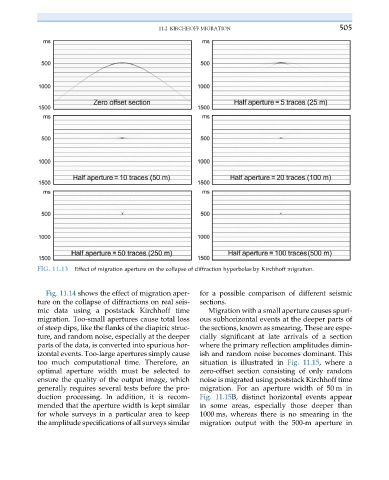Page 514 - Acquisition and Processing of Marine Seismic Data
P. 514
11.2 KIRCHHOFF MIGRATION 505
FIG. 11.13 Effect of migration aperture on the collapse of diffraction hyperbolas by Kirchhoff migration.
Fig. 11.14 shows the effect of migration aper- for a possible comparison of different seismic
ture on the collapse of diffractions on real seis- sections.
mic data using a poststack Kirchhoff time Migration with a small aperture causes spuri-
migration. Too-small apertures cause total loss ous subhorizontal events at the deeper parts of
of steep dips, like the flanks of the diapiric struc- the sections, known as smearing. These are espe-
ture, and random noise, especially at the deeper cially significant at late arrivals of a section
parts of the data, is converted into spurious hor- where the primary reflection amplitudes dimin-
izontal events. Too-large apertures simply cause ish and random noise becomes dominant. This
too much computational time. Therefore, an situation is illustrated in Fig. 11.15, where a
optimal aperture width must be selected to zero-offset section consisting of only random
ensure the quality of the output image, which noise is migrated using poststack Kirchhoff time
generally requires several tests before the pro- migration. For an aperture width of 50 m in
duction processing. In addition, it is recom- Fig. 11.15B, distinct horizontal events appear
mended that the aperture width is kept similar in some areas, especially those deeper than
for whole surveys in a particular area to keep 1000 ms, whereas there is no smearing in the
the amplitude specifications of all surveys similar migration output with the 500-m aperture in

